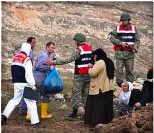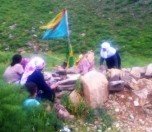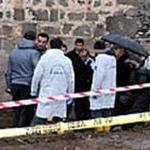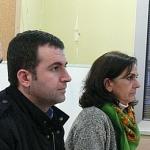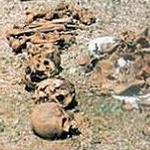Eleven Skulls found in Dargeçit
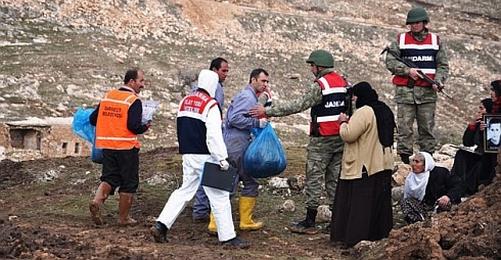
The skulls, bones and pieces of clothes belonging to eleven people were found during the excavation of a mass grave in the Bağözü village in the district of Dargeçit in the province of Mardin (eastern Turkey).
Erdal Kuzu, lawyer of the relatives of the disappeared and Branch Chairman of the Human Rights Association (İHD) Mardin Branch, said that some of the skulls found in the mass grave showed signs of bullets.
The Public Prosecution sent the human remains and the clothes to the Forensic Medicine Institute in order to make an autopsy to be able to identify the remains.
In an announcement made in Istanbul last week, the İHD criticized, "About the people who disappeared in custody we were always told 'we released them, they joined a terrorist organization'. Instead of investigating our criminal complaints they decided to drop procedures and closed the case".
"So, were they not supposed to have gone to the mountains (to a PKK hideout)?", the İHD had asked.
What happened in Dargeçit?
On 29 October 1995, the armed outlawed Kurdistan Workers' Party (PKK) abducted two teachers and killed them in Dargeçit. Subsequently, 57-year-old Süleyman Seyhan and a group of eight juveniles and children as his relatives and inhabitants of the village were taken into police custody between 2 and 6 November 1995.
13-year-old Hazni Doğan was released. Abdurahman Çoşkun and Mehmet Emin Aslan, both 20 years old, 18-year-old Abdullah Olcay, 14-year-old Seyhan Doğan, 13-year-old Nedim Akyol and 12-year-old Davut Altunkanak disappeared and were never heard of again.
The gendarmerie declared that the disappeared had joined the PKK. However, the decapitated burned body of Süleyman Seyhan was found in a well of a village on 3 March 1996.
Two days after the body was found, Special Sergeant Bilal Batırır of the gendarmerie disappeared.
As reported by the Radikal daily, all this information was revealed in the course of an investigation carried out by Dargeçit Public Prosecutor Şükrü Arslan in 2011.
In an official report, Prosecutor Arslan alleged six soldiers of "establishing an armed organization", "homicide" and "instigation to homicide". The report was sent to the Diyarbakır Public Chief Prosecution on 17 November 2011.
Upon the testimony of a secret witness, supposedly a soldier or a village guard, the Diyarbakır Special Authority Public Prosecutor gave the order to start excavations on 17 February in order to find the bodies of seven people who disappeared.
As a result, skulls, bones and pieces of clothes belonging to eleven people have been found till today.
Application to the ECHR
Lawyer Eren Keskin made a statement on this issue at one of the weekly meetings of the Saturday Mothers/People.
"We should not think that only the state officials who actually made these people disappear are responsible for the cases of disappearances. Even though Seyhan disappeared in 1996, he was registered dead in the records in 1992. The investigation was launched in 2009 and it has still not advanced. We will wait for a maximum of one more month before we are going to apply to the European Court of Human Rights (ECHR)", Keskin announced.
Hazni Doğan who was the only person released from custody said "When they released me they told my mother, 'We released your son, maybe he went to the mountains'. When I gave a statement on the topic recently, the police still said 'What you know is wrong, the state does not do such things. They went to the mountains'", Doğan recalled. (AS)




132.jpg)
